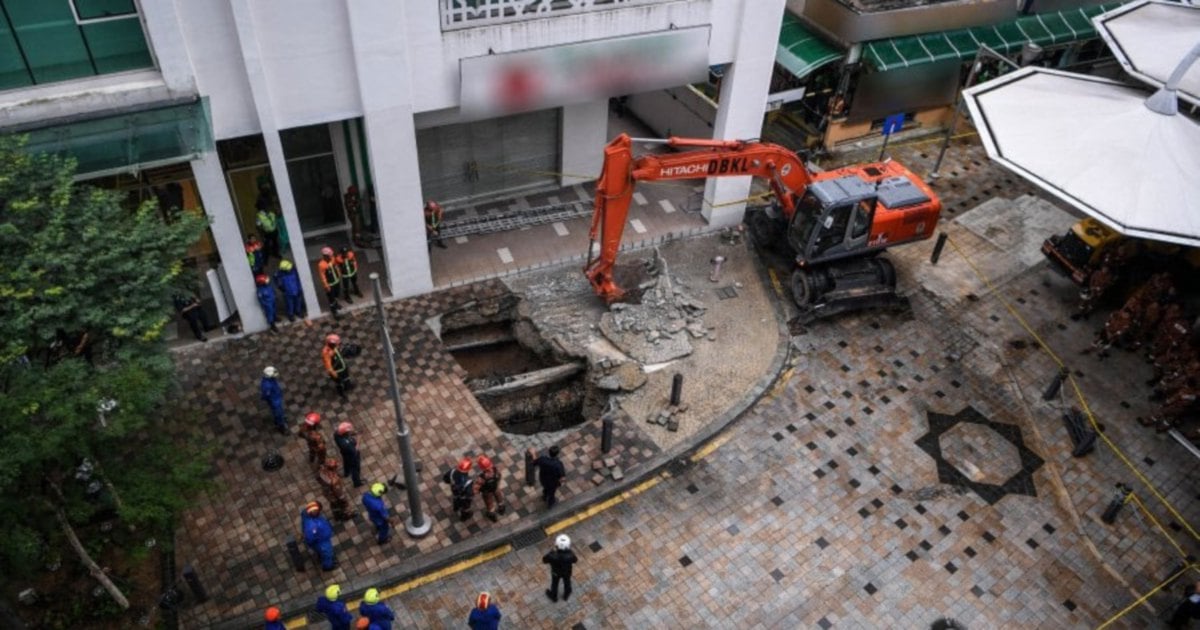KUALA LUMPUR: The investigation into the 2024 sinkhole incident at Jalan Masjid India has concluded that corroded sewer pipes and soil instability were the main factors behind the collapse, the Dewan Rakyat was told today.
Minister in the Prime Minister’s Department (Federal Territories) Datuk Seri Dr Zaliha Mustafa said that, based on the special task force’s analysis, limestone layers were only encountered at a very deep level.
This, she said, refutes public concerns that Kuala Lumpur was built on fragile limestone layers.
“Based on the task force’s analysis, which referred to geological data and soil investigation reports, the sinkhole incident occurred above the Kenny Hills Formation, underlain by schist.
“Limestone layers were only found at a very deep level, approximately 60 to 70 metres below the surface.
“Therefore, the sinkhole on Jalan Masjid India cannot be directly attributed to the presence of limestone layers.
“The task force concluded that the main factors causing the cavity beneath the pedestrian structure, which ultimately triggered the sinkhole, were the failure of corroded sewer pipes due to chemical reactions and soil instability,” she said during the question-and-answer session.
Last year, Indian tourist G. Vijaya Lakshmi was swallowed up by a sinkhole that opened beneath her feet as she was walking along Jalan Masjid India.
https://www.nst.com.my/news/nation/2024/08/1095636/updated-sinkhole-jalan-masjid-india-swallows-woman-sar-progress-watch
Search and rescue efforts involving various agencies were launched immediately, but she was never found.
Meanwhile, Dr Zaliha said the task force, led by Kuala Lumpur City Hall, collaborated with the Public Works Department, Indah Water Konsortium Bhd, the Minerals and Geoscience Department, the Institution of Engineers Malaysia, the Malaysian Geotechnical Society, the Malaysian Nuclear Agency and geotechnical experts.
She said a special edition report on the sinkhole incident will be published by City Hall for public access at the end of this year.
She added that the full report of the incident had been presented to the cabinet on Aug 20.
“The report, provided by the special task force led by City Hall, is expected to reassure the public who previously feared that Kuala Lumpur was built on a limestone layer,” she said.
Dr Zaliha said that a year after the incident, the Jalan Masjid India area had fully recovered, with various public events being held there, including the recent Deepavali celebrations.
“Even the prime minister himself visited and performed Friday prayers at Masjid India in March this year, and I, along with the senior management of the Federal Territories Department, also took the opportunity to stroll around the area during City Hall’s Car-Free Morning.
“Moving forward, the department intends to present this report to the Special Select Committee on Infrastructure, Transport and Communications, chaired by Tanjong Manis MP Datuk Yusuf Abd Wahab.
“If this report is reviewed alongside sinkhole incident reports from other urban areas such as Sepang and George Town, it will provide a more comprehensive overview and help in formulating a more thorough national mitigation strategy.”
© New Straits Times Press (M) Bhd




![[UPDATED] Ewon Benedick resigns from Cabinet](https://prwire.my/wp-content/uploads/2025/11/UPDATED-Ewon-Benedick-resigns-from-Cabinet-300x158.jpg)

